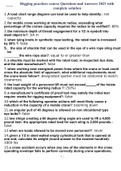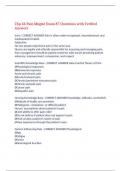Samenvatting
Summary Lecture 11-16 (endterm) - Systeemontwikkelingsmethoden (INFOB2SOM)
This summary contains everything you need to know to excel in the endterm exam of Systeemontwikkelingsmethoden (System design methods) (INFOB2SOM). The summary is about different design patterns, as well as good object-oriented design and DevOps. The summary is based on my lecture notes, and the le...
[Meer zien]













